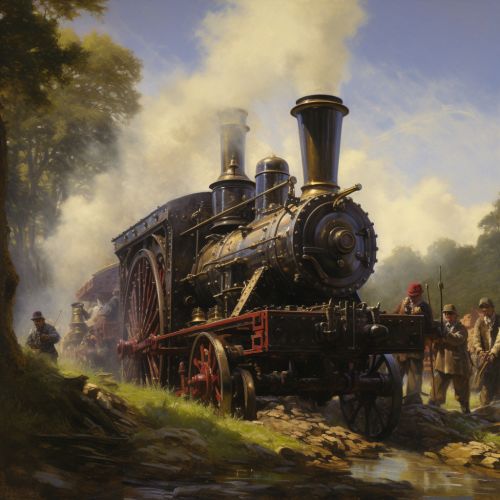19th Century Engineering
Introduction
The 19th Century marked a period of significant advancement in the field of engineering, with many innovations and discoveries that laid the foundation for modern technology. This era was characterized by rapid industrialization, the expansion of railway networks, the advent of steam power, and the development of structural steel and reinforced concrete.


Industrial Revolution
The Industrial Revolution, which began in the late 18th century and continued into the 19th century, was a period of profound change in the field of engineering. It was during this time that the use of machines in manufacturing and production became widespread, leading to significant advancements in technology and industry.
Steam Power
One of the most significant developments of the 19th century was the widespread use of steam power. The steam engine, invented by James Watt in the late 18th century, was refined and improved upon throughout the 19th century, leading to its widespread use in factories, mines, and transportation. The steam engine was a key driver of the Industrial Revolution, providing a reliable and efficient source of power that enabled the rapid expansion of industry and commerce.
Railways
The 19th century also saw the rapid expansion of the railway network, particularly in Europe and North America. The development of the steam locomotive, combined with advancements in track design and construction, allowed for the rapid and efficient transport of goods and people over long distances. This had a profound impact on society and the economy, facilitating the growth of cities and industries.
Structural Engineering
The 19th century was a period of significant advancement in the field of structural engineering, with the development of new materials and construction techniques.
Steel
The development of steel as a construction material was a major advancement in the 19th century. The Bessemer process, developed in the mid-19th century, allowed for the mass production of steel, making it a viable and cost-effective alternative to iron. Steel was stronger and more durable than iron, making it ideal for use in the construction of bridges, buildings, and other structures.
Reinforced Concrete
The 19th century also saw the development of reinforced concrete, a composite material that combines the compressive strength of concrete with the tensile strength of steel. Reinforced concrete was first used in the mid-19th century and quickly became a popular material for construction due to its strength, durability, and resistance to fire and weather.
Conclusion
The 19th century was a period of rapid advancement in the field of engineering, with many innovations and discoveries that have had a profound impact on society and the world as we know it today. The developments of this era laid the foundation for the modern world, and the principles and techniques developed during this time continue to be used in engineering today.
